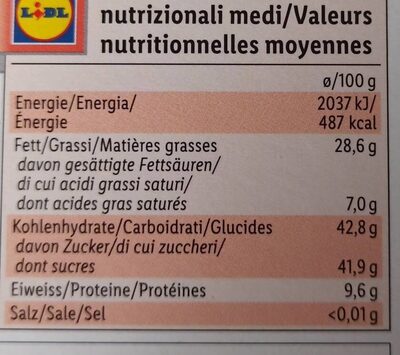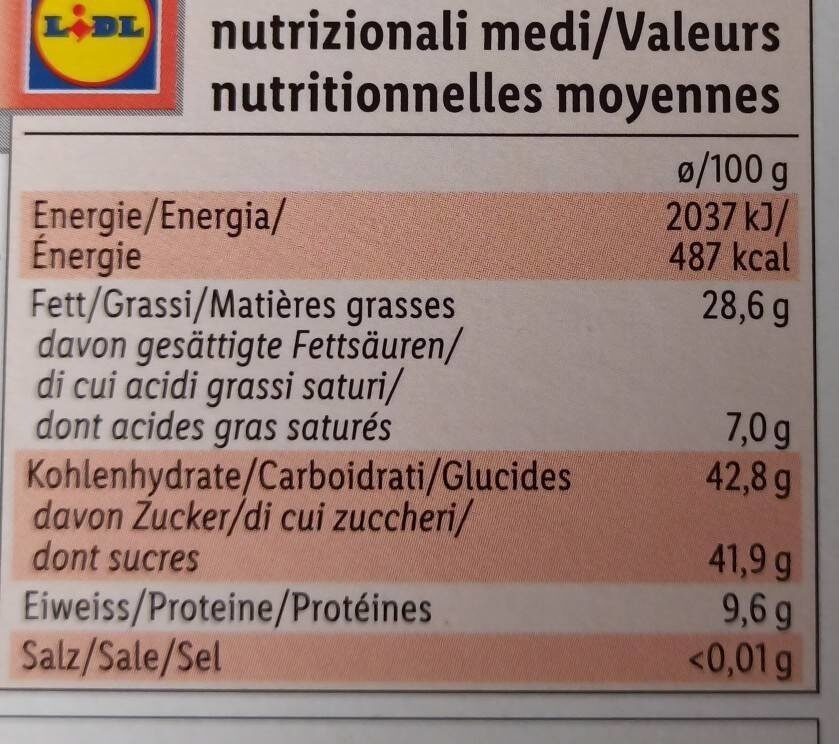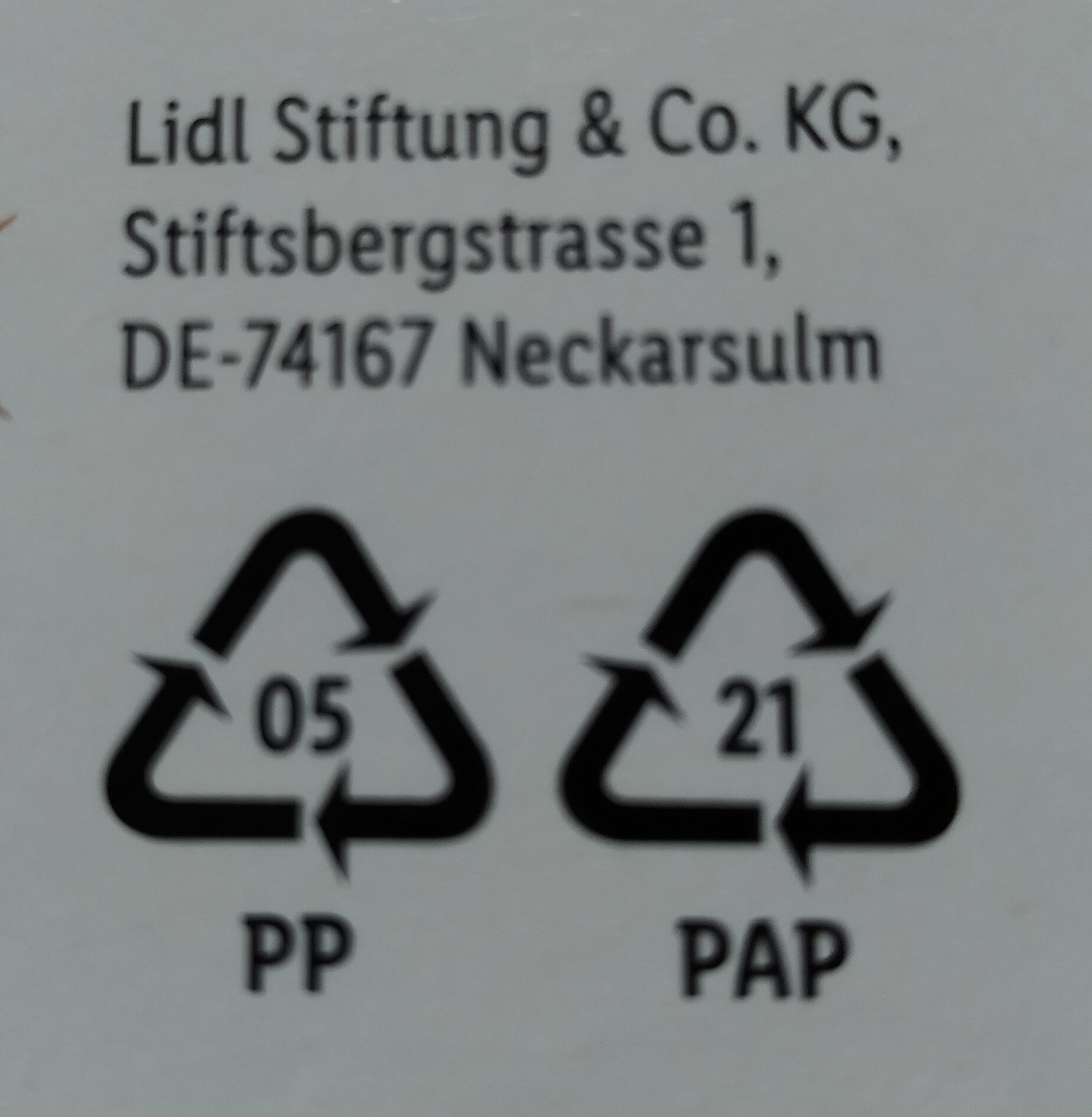Lübecker marzipan - Favorina - 125 g
Ambiguous barcode: This product has a Restricted Circulation Number barcode for products within a company. This means that different producers and stores can use the same barcode for different products.
×
This product page is not complete. You can help to complete it by editing it and adding more data from the photos we have, or by taking more photos using the app for Android or iPhone/iPad. Thank you!
×
Barkod: 20601812
Količina: 125 g
Ambalaža: en:Metal, en:Recyclable Metals, 41 ALU, en:Blister, en:Box, en:Cardboard, fr:Film plastique, fr:Individuel, 21 PAP, fr:PP5
Брендови: Favorina
Категорије: en:Snacks, en:Sweet snacks, en:Cocoa and its products, en:Confectioneries, en:Festive foods, en:Chocolate candies, en:Christmas foods and drinks, en:Christmas sweets, en:Marzipan
Oznake, sertifikati, nagrade:
Fair trade, Fairtrade International, en:Green Dot, en:Made in Germany, en:PDO, en:PGI, Triman, fr:PAP21




Mesto u kojem se proizvodi ili prerađuje: Germany
Prodavnice: Lidl
Matching with your preferences
Report a problem
Data sources
Product added on од kiliweb
Last edit of product page on од fix-serving-size-bot.
Страницу производа такође уредио ecoscore-impact-estimator, inf, lois-r, moon-rabbit, nouky20, oktobar18ti, openfoodfacts-contributors, packbot, quechoisir, roboto-app, yuka.VDc0c052ME5uY2NXbk1JejQwLzg5ZUp1OWNMMmVsdW9CTzlKSVE9PQ, yuka.sY2b0xO6T85zoF3NwEKvll1HatWFuSD5KRr5vkCK24mVE6TZS4puw6TfEqs, yuka.sY2b0xO6T85zoF3NwEKvllMfcOfa-zToHBDvnW-x--rQEZ7HRNZQ67n5KKg, yuka.sY2b0xO6T85zoF3NwEKvllVMa-uCnW2ZODfmkGCMn46eNIDRMfF_5K7Baqs, yuka.sY2b0xO6T85zoF3NwEKvlldtUMvjnRLtLzLuoEai-96HFMfuMdt9yLjfNqg.













